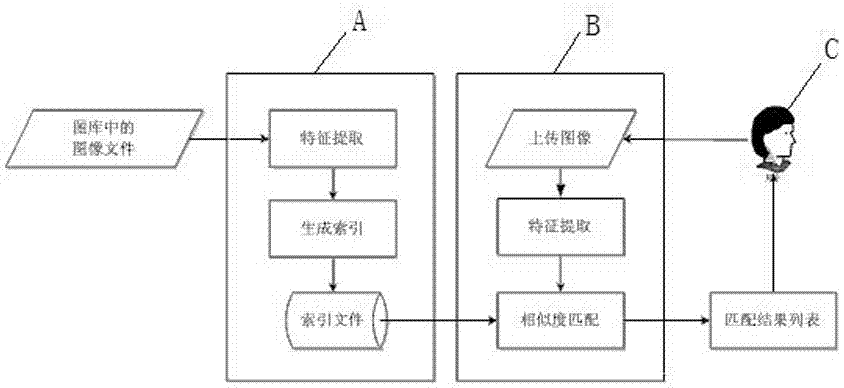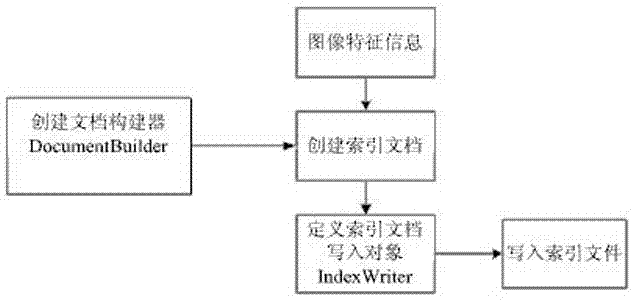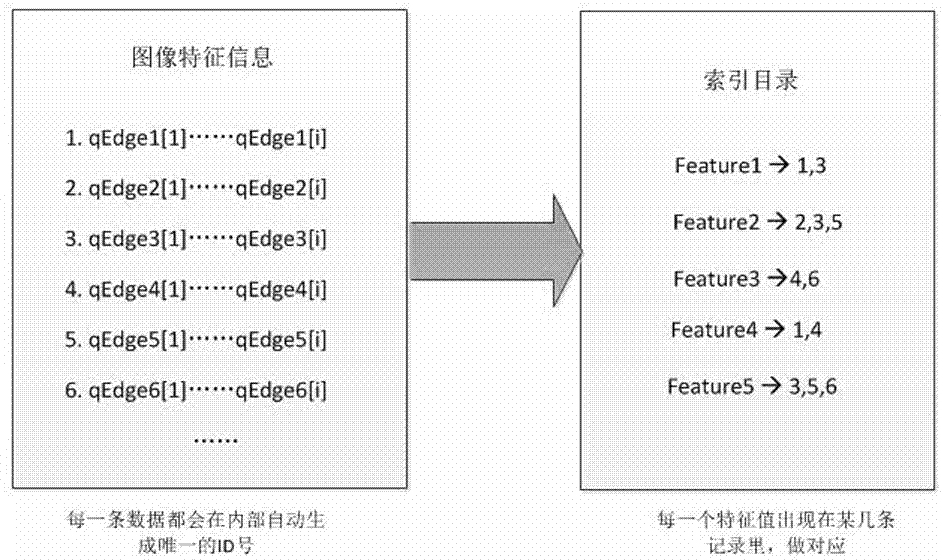Panoramic image retrieval and display method
A panoramic image and panorama technology, applied in the field of multi-dimensional panoramic display, can solve the problems of low efficiency, poor interactivity, and inconvenient use, and achieve the effect of convenient use and improved user experience
- Summary
- Abstract
- Description
- Claims
- Application Information
AI Technical Summary
Problems solved by technology
Method used
Image
Examples
Embodiment Construction
[0042] see figure 1 , a panoramic image retrieval and display method of the present invention is characterized in that it mainly includes an index building step A and an image query step B, and the index building step A extracts the features of the image files in the gallery to generate an index file; user C queries the image Step B uploads the image to be retrieved, image query step B extracts the features of the image to be retrieved, performs similarity matching between the image uploaded by user C and the features of the index file in index building step A, and provides a list of matching results to user C.
[0043] The running system of the present invention (the system mentioned below is the present invention and the running system) is mainly a server and a user terminal, the gallery is set in the server, and the user terminal includes a smart phone and various PCs. The present invention mainly includes three major functions: input function, retrieval function and query ...
PUM
 Login to View More
Login to View More Abstract
Description
Claims
Application Information
 Login to View More
Login to View More - Generate Ideas
- Intellectual Property
- Life Sciences
- Materials
- Tech Scout
- Unparalleled Data Quality
- Higher Quality Content
- 60% Fewer Hallucinations
Browse by: Latest US Patents, China's latest patents, Technical Efficacy Thesaurus, Application Domain, Technology Topic, Popular Technical Reports.
© 2025 PatSnap. All rights reserved.Legal|Privacy policy|Modern Slavery Act Transparency Statement|Sitemap|About US| Contact US: help@patsnap.com



